Editor’s Key Takeaways: Mastering Full-Body Portrait Photography: Essential Tips

Full-body portrait photography requires more effort compared to headshots. It involves considerations like posing, lens choice, camera angle, and lighting that need to be applied to the entire body. Here’s a concise step-by-step guide:
- Choose the Location: Select a studio, indoor, or outdoor setting based on your desired theme. Scout locations in advance to identify and address any issues.
- Use the Correct Lighting: Understand lighting techniques to highlight your subject effectively, considering the importance of both natural and artificial light.
- Pose Your Model: Guide your model to natural, flattering poses that enhance the full-body composition, paying attention to their posture and hand placement.
- Create the Look: Incorporate elements like clothing and props to achieve the desired aesthetic, and communicate effectively with your model to evoke the right expressions.
- Frame the Subject: Pay attention to your framing, ensuring the entire body fits well within the shot while experimenting with different camera angles.
- Select the Right Aperture: Choose an aperture setting that balances the background and subject focus effectively, knowing when to use wider or smaller apertures based on your shot.
By following these steps, you can capture excellent full-body portraits with ease.
Introduction
Full-body portrait photography involves significantly more work than simple headshots. While all portrait photography requires considerations such as posing and selecting the appropriate lens, camera angle, and lighting, these factors are amplified in full-body photoshoots as you must consider the subject’s entire body, not just the head and torso.
If you want to capture excellent full-body shots, it’s essential to understand the nuances and techniques involved in this photographic approach. Below, we provide a comprehensive guide to full-body shooting, along with vital tips and lens recommendations.
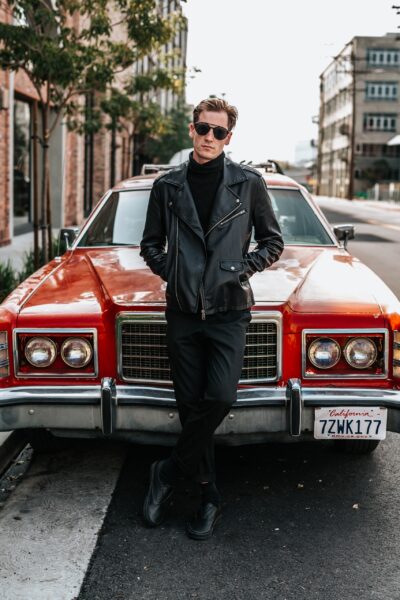
How to Shoot Full-Body Portraits: A Step-By-Step Guide
I have developed a straightforward six-step system for capturing full-body portrait photos. Each section includes clear instructions to help you start producing great images as soon as possible.
Step 1: Choose the Location
Before considering lighting, posing, and camera settings, you need to choose your portrait photoshoot location. This first step depends on the type of photography you want to create.
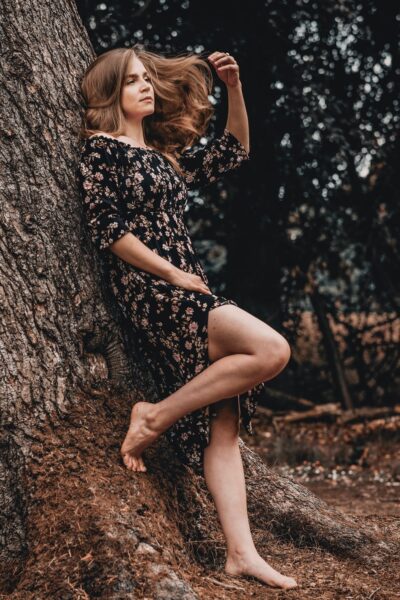
Full-body portraits can be captured in a studio, indoors, or outdoors. Each setting offers unique advantages:
- Studio: Ideal for controlled environments with blank backdrops, suitable for professional portraits.
- Indoor (non-studio): Provides variety in backgrounds, allowing storytelling and thematic expression.
- Outdoor: Offers the most diversity and interaction with surroundings, enhancing the overall composition.
Consider the type of photos you wish to create, and select a location that fits the theme, style, or purpose. I recommend scouting outdoor locations in advance to identify and resolve potential issues. For indoor settings, don’t hesitate to rearrange furniture or objects for better photos!
Step 2: Use the Correct Lighting
After choosing your location, you must consider the lighting. This crucial aspect of full-body portraits should be handled either before posing your model or concurrently.
Assess your location: what natural light is available? Is there sufficient natural light to avoid additional lighting equipment? If not, determine which accessories you need and where to position them to light your model effectively. The goal is to create even lighting across the subject, avoiding excess shadow or washed-out areas.
With these considerations in mind, let’s explore specific lighting equipment for indoor and outdoor locations.
Indoor Lighting
For full-body portraits, it is vital to illuminate the entire body. Relying on a single small flash with a diffuser can be challenging. I recommend using more powerful lights, preferably studio strobes, modified with softboxes to achieve soft, even lighting.
Softboxes help to reduce the intensity of bare strobes for a softer effect and expand the coverage of smaller flashes, ensuring your subject is well-lit from all angles. For example, the Profoto RFi 1' x 4' is capable of lighting an adult model from head to toe, making it ideal for full-body photoshoots.
While one strip box can achieve the necessary effect, I recommend using two. Position them to fire from the right and left, just out of the camera’s view. Use one as the main light to illuminate the side of the subject facing the camera, and the other to create a bright edge that separates the model from the background (positioned slightly behind the model). Ensure the light intensities differ to achieve a three-dimensional effect.
Elevate the light a few inches above the camera and angle it slightly downward for broader coverage. Keep in mind there will be some light falloff, as the light must travel a longer distance to reach the model’s feet. If available, use a third light to illuminate the lower part of the subject’s body. If a third light isn’t accessible, consider using a reflector instead.
Outdoor Lighting
When shooting portraits outdoors, I recommend combining artificial lights—like the strobe included in the Westcott FJ400 Backpack kit—with ambient light. This approach allows the ambient light to illuminate the background while using the artificial light on your model.
The sun is the most significant source of available light. Unfortunately, it’s not a soft light, and unless you’re shooting during sunrise or sunset, you’ll likely end up with high-contrast photos featuring deep shadows and raccoon eyes. While artificial lighting can mitigate this issue, it’s often best to shoot in shaded areas.
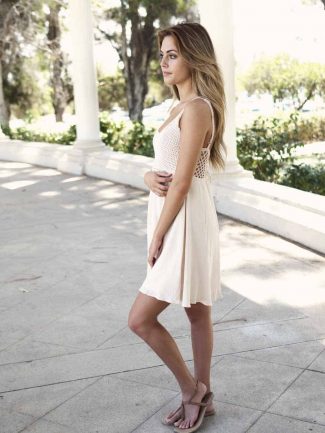
If no shade is available, consider having a friend or assistant hold a reflector above your model’s head!
Step 3: Pose Your Model
Your model’s pose is one of the most critical elements in portrait photography. After managing the location and lighting, you must direct your subject effectively. Consider various factors: where they should stand, how they should align with your camera, and the position of every part of their body.
Collaborate with your model to create a pose that aligns with the type of photo you want to capture. Provide specific instructions and clearly communicate your expectations throughout the session.
The positioning of the hands is crucial in full-body portrait posing. Many individuals have limited modeling experience and may feel awkward with their hands, often leaving them dangling at their sides. Encourage them to engage their hands in a natural way, perhaps by placing them on their hips or gently touching their face.
Posture is equally important; if someone slouches or positions their head incorrectly, the resulting image may appear stiff and awkward. Aim for a relaxed yet confident posture that highlights the subject’s best features.
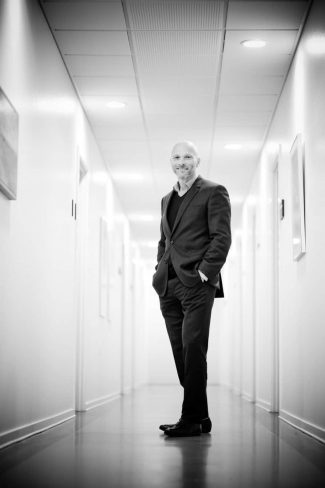
Consider the model’s leg position as well. Ideally, their weight should be on the back leg, with the front leg positioned to create a dynamic pose. This technique helps to create a natural curve and shape in the body, enhancing the overall aesthetic of the portrait.
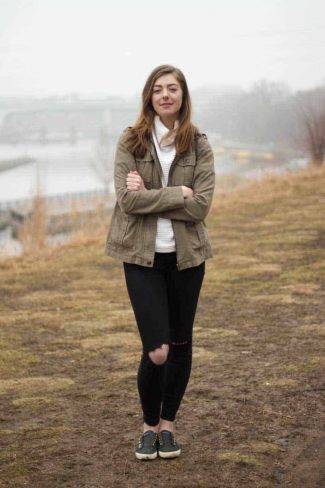
Women are often instructed to form an S-shape with their bodies to accentuate the feminine form, while men may lean against a wall or turn to face the camera at an angle. Ultimately, posing should reflect personal preference rather than adherence to trends. Encourage your model to express themselves naturally, making the session more enjoyable and authentic.
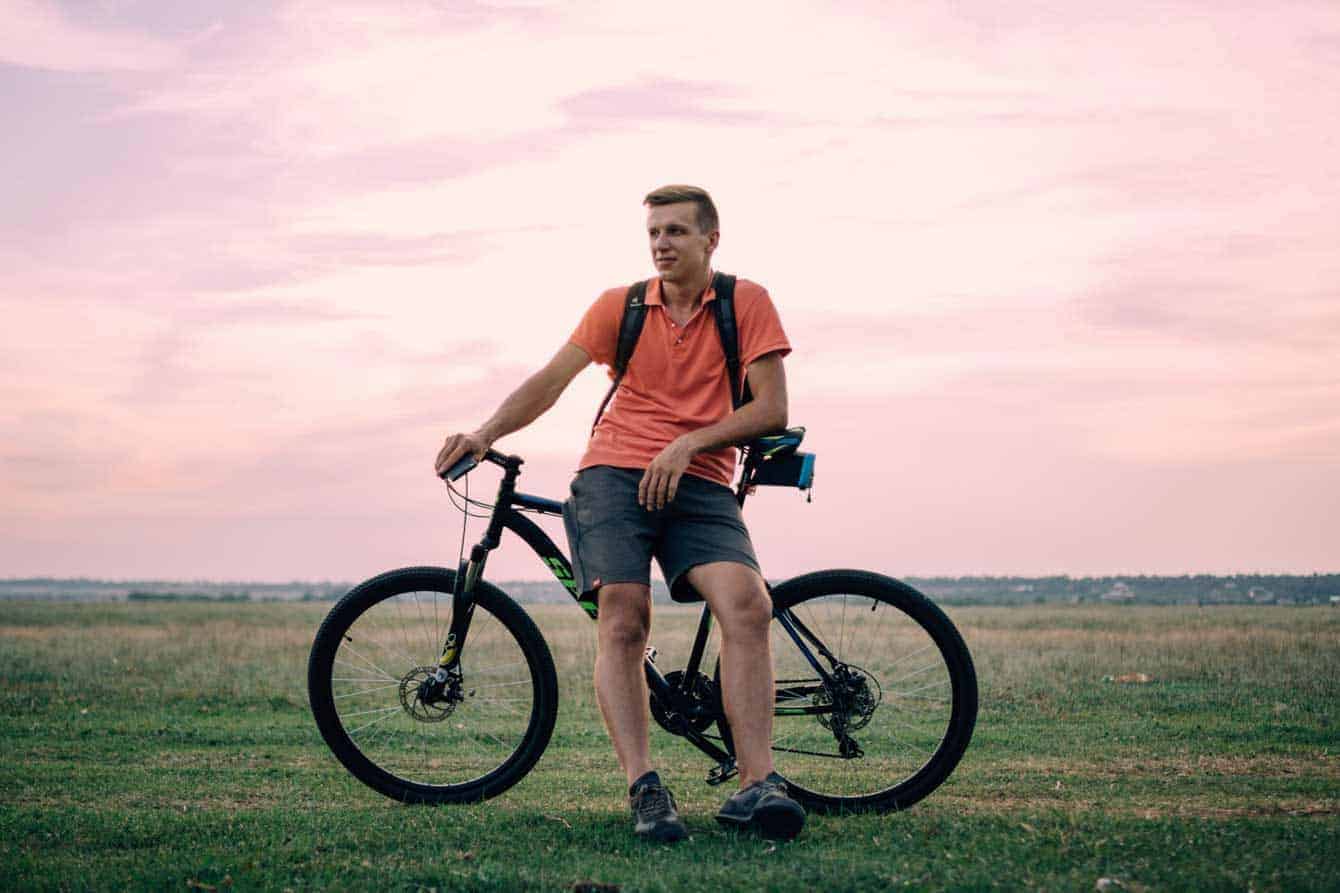
For inspiration, I recommend exploring popular fashion magazines that feature a vast range of full-body poses you can incorporate into your photos. Analyze the poses and adapt them to suit your style and subject.
Step 4: Create the Look
After positioning your model, it’s time to prepare their look and facial expression. Consider the theme, mood, and style you want to convey, then direct your model accordingly to evoke the desired emotions.
Once again, clear communication is essential. Explain how they should position their head, where they should look, and what facial expressions to adopt. Regularly preview the images on your camera’s LCD to observe how minor adjustments impact the overall shot.
Facial expressions significantly influence the composition and feel of your full-body portraits. Avoid bland, emotionless looks unless that aligns with your desired style. Instead, encourage your model to showcase genuine emotion, whether it’s joy, contemplation, or confidence.
Even subtle expressions—a slight smile, an off-camera gaze, or pursed lips—can make a substantial difference. They contribute to full-body portraits that are visually appealing and showcase more character. Experiment with different expressions and angles to find what works best for your model.
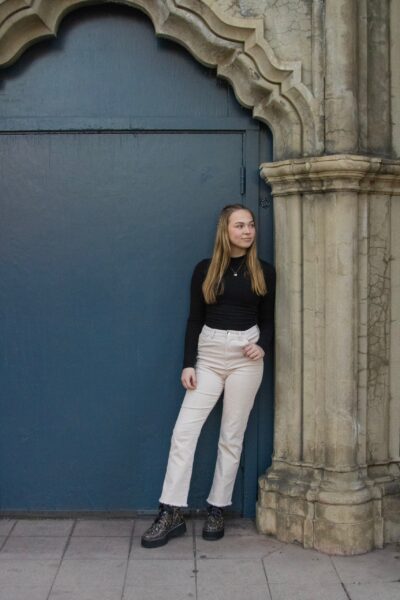
Your model may feel nervous, leading to awkward smiles and facial expressions. To mitigate this, break the ice at the beginning of the session, provide clear directions, and help them settle into the photoshoot. Remember, 80% of a session involves preparing the model, while only 20% is about taking photos!
Step 5: Frame the Subject
With your model posed and ready, they should understand how to stand and act. Now it’s time to frame them using the appropriate camera angle.
Move around with your camera and experiment with different angles and compositions until you achieve the desired effect. This process is about being adventurous; the more you explore different options, the more successful you’ll be.
Note: While camera angle is crucial, framing is also influenced by your choice of lens (discussed below).
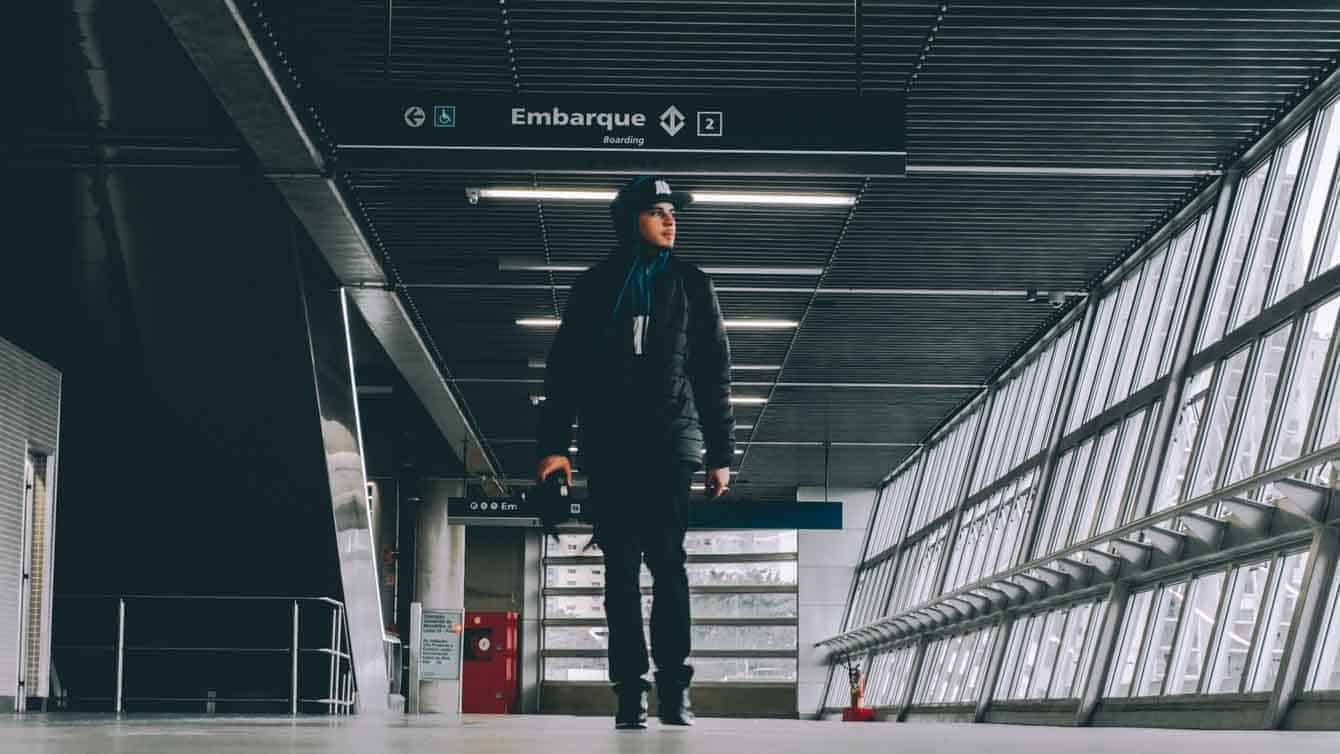
The best portrait photographers use space to their advantage. Don’t remain stationary—move your model and your camera. Some general guidelines to follow include:
- Begin with your lens level with the model’s eyes for a more engaging perspective.
Regardless of the angle you choose, ensure your subject appears proportionate and their body does not seem elongated or squashed. Take your time to adjust your position until you find the most flattering angle.
Step 6: Select the Right Aperture
Finally, you must address your portrait camera settings. Generally, select a low ISO, and shutter speeds are less critical because the subject should be stationary, making aperture the most crucial element to consider.
Most full-body portrait photography uses a wide aperture (e.g., f/2.8) for excellent subject and background separation. With the right lens and careful execution, you can create a professional bokeh effect.
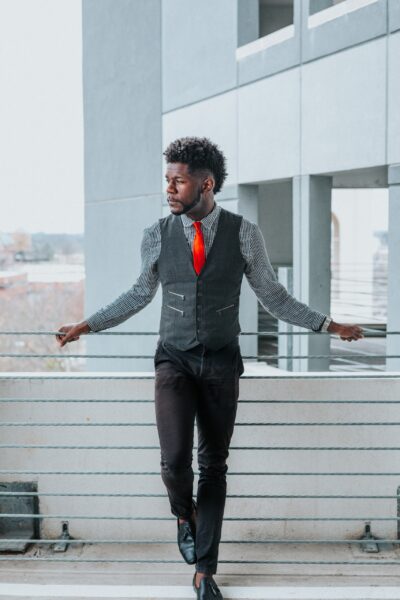
However, you can also opt for a smaller aperture (e.g., f/5.6). This setting will yield more in focus, making it ideal if you want to emphasize both the model and the surroundings. Experiment with different apertures to find the best fit for your specific shoot.
Best Lenses for Full-Body Portraits
Before you spring into action and follow this step-by-step guide, consider your lens selection. It’s best to handle this well in advance of your photoshoot to optimize your results.
For full-body portrait photography, wide-angle lenses are generally not recommended. They can cause distortion and diminish the emphasis on your subject. Instead, I recommend a lens with a focal length of 50-70mm. This range allows you to focus on the model while still capturing some background context.
All three of these lenses are incredibly versatile and suitable for both indoor and outdoor full-body portrait photoshoots. Depending on your camera system, consider lenses such as:
- 50mm f/1.8
- 85mm f/1.8
- 70-200mm f/2.8
These lenses will provide you with the flexibility needed to capture stunning full-body portraits in a variety of settings.
Start Your Full-Body Portrait Photography Today
As you can see, full-body portrait photography requires a different approach compared to standard headshots and head-and-shoulders portraits. It’s essential to understand the differences and ensure you know how to frame your subject, create the right look, and utilize the appropriate equipment to achieve the best results.
Good luck with your portraits! By following my step-by-step strategy, you’ll capture some remarkable images and develop your skills in full-body portrait photography.
Related Posts
Disclosure/Disclaimer: As an Amazon Associate, we earn from qualifying purchases. Certain content was provided "as is" from Amazon and is subject to change or removal at any time. Product prices and availability: Amazon prices are updated daily or are accurate as of the date/time indicated and are subject to change. Any price and availability information displayed on Amazon.com at the time of purchase will apply to the purchase of this product.
